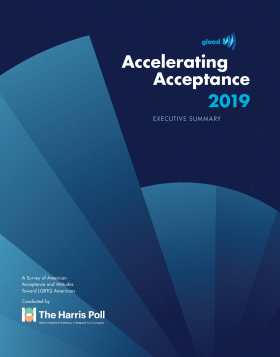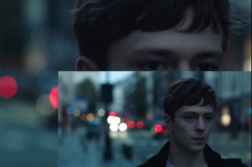 A 2019 GLAAD study found that people 18 to 34 years old are less comfortable than other groups in personal situations involving people of different gender orientations. But here’s why jumping to the conclusion that this indicates eroding LGBT acceptance is a misrepresentation of the data.
A 2019 GLAAD study found that people 18 to 34 years old are less comfortable than other groups in personal situations involving people of different gender orientations. But here’s why jumping to the conclusion that this indicates eroding LGBT acceptance is a misrepresentation of the data.
The key to understanding social changes indicated by the study is to keep in mind that the study asked about “comfort levels.” In fact, personal comfort does not always equal acceptance. This is particularly relevant today. Aren’t just about all Americans more anxious about everything now than in the recent past?
In contrast, other studies such as the PEW studies found growing acceptance across the board, even among groups of former resisters, like church-going Christians and even Mormons. In contrast, PEW asked whether society should accept LGBT relationships. It is to be expected that even many accepting people are still uncomfortable in certain personal situations. So the PEW questions more accurately gauge acceptance, while the GLAAD study reflects what this looks like on the ground today. It’s the difference between asking about how things are versus how they should be.
The bottom line is that we know discomfort would disappear if society were different. On a late-night talk show, actress Lily Tomlin discovered that one of her best friends, Jane Fonda, had not been inviting her to regular dances at her house. It turns out it was because she apparently wanted to avoid potentially making other people at the dance uncomfortable.
Particularly since there’s no change in the comfort levels of the staunchest supporters and resisters, and the only decreases in comfort levels were for 18 to 34 year old women in personal situations (like choice of doctor, learning a family member is LGBT, and finding out one’s child is being taught LGBT history), the uptick reflects increased personal anxiety about others’ lack of acceptance, not decreased acceptance as touted in many headlines around the world.
Unfortunately, gay awareness brings new and weird misunderstandings. For example, especially in big cities, friends can’t very well have lunch anymore without people assuming they’re lovers! Many straight people went from totally oblivious to overly vigilant, so that’s not always so comfortable. But it’s the price for living in a media-savvy culture.
Furthermore, the Me Too & Time’s Up movements, while they are game changers in the fight for justice, really highlight things kids previously didn’t have to worry about. Maybe this is why young people and especially young women do not want to think about the sexual orientation of their doctors and feel kids shouldn’t have to be burdened with LGBT history lessons. There’s time enough to worry about the injustices of the world.
There are undoubtedly many factors driving personal discomfort levels now. Case in point: security cameras and voice recordings are everywhere, even in violation of the Fourth Amendment. Slowly but surely, our baseline comfort levels are changing for the better. Perhaps we have been too many years at war, and the increasingly merciless new economy is changing the American psyche in ways that do not serve us well. As a result, we are now more self-conscious and feel pressure to be more conformist. But isn’t being unique every person’s birthright?
In conclusion: although “divide and rule” politics are often blamed for the change in LGBT comfort levels, it is only half of the story at most.
Laura Moreno is a manuscript editor and freelance writer based in Los Angeles.







Discussion2 Comments
“On a late-night talk show, actress Lily Tomlin discovered that one of her best friends, Jane Fonda, had not been inviting her to regular dances at her house. It turns out it was because she apparently wanted to avoid potentially making other people at the dance uncomfortable.”
Oh God, I felt this.
Is this the late-night talk show interview you’re mentioning in the article? The same interview in which Jane Fonda names Ellen Page as one of the people invited to her dance parties, and Elizabeth Banks dances provocatively for and ON Jane Fonda and Lily Tomlin in front of a live audience on network TV? I certainly did not detect discomfort with LGBT relationships here.
https://www.youtube.com/watch?v=Y9tb2qJJgSM
There’s also this clip from 1979 where Jane Fonda talks about the movement for LGBT rights as “seeking nothing less than respect and justice and stopping discrimination against people because of sexual preference . . . . . If we’re going to survive as a world . . . [LGBT activists] are going to win.
https://www.youtube.com/watch?v=4Oo87HDpgHk
Please consider revising this article. The inclusion of this anecdote seems wildly inaccurate. It does not at all support the author’s main argument, and it inaccurately characterizes the views of a longtime LGBT ally in Jane Fonda.